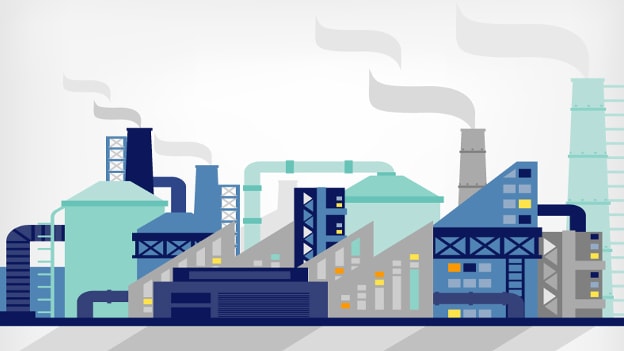To be or not to be the ‘Industry’: The legal perspective

We live in age of jobless growth marred by patches of economic downturn and negative spiral. Thomas Friedman in his book World is Flat has given certain tools in his book to rock in these times. The focus is going to be more on individual skills and less on “organized activity between the employer and employee”. The challenge for us is to race fast to grab this opportunity and create sustainable advantage.
But is India ready to leverage this paradigm? We analyze this transformation through the lens of Industrial Disputes Act 1947, which is mother of Labour & Employment Laws in India.
Will the provisions of strike, lockout, retrenchment, layoff, bipartite forums and adjudication be applicable to Gangaram Hospital, ISRO, ISB, University of Delhi, Mohun Bagan Football Club, Municipal Corporation of Delhi and organizations like these? The answer lies in whether they are covered within the ambit of Industry in Industrial Disputes Act.
The definition of ‘Industry’ in the Act has gone through tumultuous journey in last 68 years. A historical perspective of this journey not only gives a peep into the evolving thoughts of judiciary and legislature on what should and shouldn’t be industry, but also signals the landmines that are not yet diffused.
‘Industry’ is defined in very generic terms in the Act. From employers’ perspective, it includes any business, trade, undertaking, manufacture or calling and from workmen’s perspective, it includes any calling, service, employment, handicraft or industrial occupation or avocation.
This definition is too generic and has led to numerous contradicting interpretations. For simplicity sake, we categorize the journey into 5 distinct phases:
Phase I: Expansive interpretation
In 1953, the definition of industry was interpreted for first time in D. N. Banerji vs. P R Mukherjee Case. Sanitary Inspector and Head Clerk were suspended by Budge Budge Municipality and the Workers’ Union had raised dispute demanding reinstatement. In the Supreme Court, the Municipality pleaded that it is discharging sovereign function under the Bengal Municipal Act and hence, it is not industry and thus the dispute is not an industrial dispute. The Court observed that the definition is intended to include even those activities that cannot be called trade or business. It held that Municipality is an industry because sanitation and conservation is an undertaking which is comparable to trade and industry.
The reason for giving a wide interpretation to the word ‘Industry’ was that the Court wanted to bring organizations within fold of ID Act so that a large number of agitations and strikes could be curtailed and industrial peace could prevail
The practice of giving wide interpretation of definition continued. In 1960, Hospital Mazdoor Sabha Case brought hospitals within ambit of industry. This case involved payment of retrenchment compensation to workmen in JJ Hospitals, Mumbai. The Management pleaded that the Hospital was not involved in any trade or business and hence they are not industry. Court framed a working principle that any systematic activity for production or distribution of goods or services done with help of employees in the manner of a trade or business is an industry. The services in the hospital were held to be material service and hence Hospitals are industry under the Industrial Disputes Act.
The reason for giving a wide interpretation to the word ëIndustryí was that the Court wanted to bring organizations within fold of ID Act so that a large number of agitations and strikes could be curtailed and industrial peace could prevail.
Phase II: Selective exemption
In 1961, University of Delhi Case makes an aberration to Phase-I. A driver of Miranda House was discharged from service which led to dispute. University claimed that it is not industry and the Court agreed. The Court held that education is imparted by teachers who are not workmen. The intention of legislature was not be include educational institutions within industry to extend benefits to the drivers and others who are not core service providers.
Phase III: Reversal
In 1967, Safdarjung Hospital Case reverses the judgment of Hospital Mazdoor Sabha Case. DN Banerji Case meets Waterloo in Safdarjung. This Case dealt with same issue again: Is Hospital an industry?
It provided clarity on how to determine whether an activity is industry or not.
Safdarjung Case developed a strong logic for deciding what constitutes service. “Material services involve an activity carried on through co-operation between employers and employees to provide the community with the use of something such as electric power, water, transportation, mail delivery, telephones and the like.”
Such material services qualify to be included as Industry. But for professionals like Doctors, Lawyers, Teachers, material service do not arise as they are not engaged in occupation in which employers and employees co-operate. Hence, organizations like Hospitals and Educational institutions do not fall within industry.
The definition of ‘Industry’ in Industrial Disputes Act is too generic and has led to numerous contradicting interpretations
The Court made a strong pitch to keep professionals outside the ambit of industry. It has been 48 years since the Safdarjung Case was decided, clearly outpacing the legislative activism.
Phase IV: Objective interpretation
The watershed judgment on definition of industry was delivered in 1978 in Bangalore Water Supply Case. This case devised a triple test to determine whether an activity can be called industry or not. These tests were:
- Systematic activity
- Organized by co-operation between employer and employees
- For production and distribution of goods and services calculated to satisfy human wishes
Running through these filters, the Court overruled a large number of judgments — Safdarjung, Madras Gymkhana, University of Delhi were turned down.
The implication of this judgment was sweeping: Hospitals, Clubs, Education institutions, Charitable organizations, Municipalities, Research Institutes, Training organizations were covered within the ambit of industry.
Phase V: Chaotic subjectivity
The government responded to judicial activism and amended the definition in 1982 by adopting a triple test of Bangalore Water Supply Case but, mindful of the dissenting judgments, excluded hospitals, education institutions, research & training institutions, charitable organizations from the definition.
This definition would put all noises to rest and be an absolute enabler to India’s growth story. It has been 33 years but the definition is not made effective yet.
Meanwhile, dissent continues in corridor of Supreme Court.
In Coir Board Case of 1990, apex Court was faced with whether Coir Board of Ernakulam, set up to support the Coir Industry, would be industry. The Court was of view that the Coir Board is delivering sovereign function and hence it is not industry. It differed with the judgment of Bangalore Water Supply Case and requested a larger Bench to review the judgment.
Again in 2005, Jai Bir Singh’s case rebelled with the Bangalore Water Supply Case. The Court held that the social forestry Department of a State is a sovereign function and not industry. Let a larger bench review Bangalore Water Supply Case.
These post 1990 judgments reflect anguish of Court for the delay in implementing new definition and resultant litigation and chaos for business.
Definition of Industry is still in crossroads. Bangalore Water Supply Case and the Amendment have not resolved the crisis. We rest our hope in the proposed Industrial Relations Bill 2015.
At stake is game changing agenda: Will Hospitals, Research institutes, Training Institutes be covered as industry. Doctors, Architects, Scientists, Trainers are the people who are taking India in the world map. They are the people who will make “Skill India” and “Entrepreneurial India” campaign a reality.
We will have to make a choice, whether to bound them in the shackles of the Industrial Disputes Act or allow them to explore their skills and knowledge so that they can create employment and growth.













